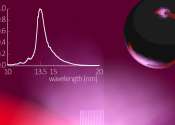Fifty perfect photons for 'quantum supremacy'
Fifty is a critical number for quantum computers capable of solving problems that classic supercomputers cannot solve. Proving quantum supremacy requires at least 50 qubits. For quantum computers working with light, it is ...









